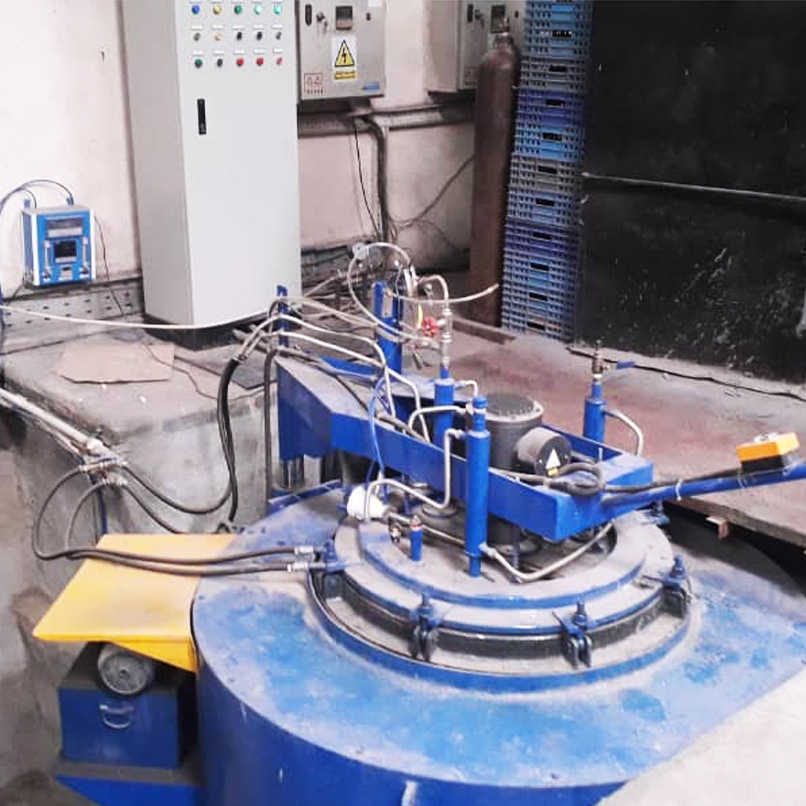Common problems and experience summary of carburizing process
May. 21, 2024
Common defects and countermeasures of carburized parts
1. Large blocky or network carbides appear in the carburizing layer
Cause of defect: too high surface carbon concentration
1) In drip-type carburizing, the drop volume is too large;
2) Control the atmosphere for carburizing and there is too much enriched gas;
3) The carburized layer is air-cooled after it comes out of the furnace, but the cooling rate is too slow.
Countermeasures:
1) Reduce the surface carbon concentration, reduce the amount of dripping during the diffusion period and appropriately increase the humidity during the diffusion period, and also appropriately reduce the amount of dripping during the carburization period;
2) Carburizing agent that reduces solid carburization;
3) The room temperature is too high in summer, and the air-cooling parts can be blown to help cool down after leakage;
4) Increase the quenching heating temperature to 50~80ºC and appropriately extend the holding time;
5) Quenching twice or normalizing + quenching, or normalizing + high temperature tempering, and then quenching and tempering.
2. A large amount of retained austenite appears in the infiltration layer
Cause of defect:
1) Austenite is relatively stable, and the content of carbon and alloy elements in austenite is relatively high;
2) Tempering is not timely and the austenite is thermally stabilized;
3) Cooling is too slow after tempering.
Countermeasures:
1)The surface carbon concentration should not be too high;
2) Reduce the direct quenching or reheating quenching temperature, and control the level of core ferrite to ≤3;
3) Quick cooling after low temperature tempering;
4) It can be reheated and quenched, cold treated, or tempered at high temperature and then quenched again.
3. The carbon concentration of the infiltration layer is low
Cause of defect:
1) The carbon potential in the furnace is low, the temperature is low, the amount of drops is small, and the furnace leaks;
2) Carbon black forms or is covered with carbon black on the surface of the workpiece, and too much furnace is loaded.
3) The furnace atmosphere is uneven and the furnace pressure is too low, causing local dead spots in the furnace;
4) The distance between workpieces is too small and the furnace circulation is not smooth;
5) Decarburization during cooling after infiltration.
Countermeasures:
1) When carburizing, always check the furnace temperature and the amount of penetrating agent;
2) Pay attention to furnace gas and furnace pressure;
3) Prevent the furnace from leaking air and the fan from stopping and reversing;
4) The distance between workpieces is greater than 1cm;
5) Frequently burn carbon black, clean the carbon deposits in the furnace, and then pour kerosene or methanol into the well for protection.
4.Too much ferrite in the core leads to insufficient hardness
Cause of defect:
1) Low quenching temperature;
2) The reheating and quenching holding time is insufficient, and the quenching cooling rate is not enough;
3) There is undissolved ferrite in the heart;
4) There are austenite decomposition products in the center.
Countermeasures:
1) Reheat and quench according to normal process;
2) Properly increase the quenching temperature and extend the holding time.
5. Overheating
Cause of defect:
1) Excessive potential during carburizing or excessive potential during quenching and heating causes the grains to grow and the brittleness to increase;
2) Overpotential during carburizing, not only the carbon content of the surface layer increases, but also carbides increase, leading to ledeburite;
Countermeasures:
1) Use normalizing to refine the grains;
2) During heating and quenching in the salt furnace, the workpiece cannot be close to the electrode;
3) Check whether the instrument is malfunctioning.










